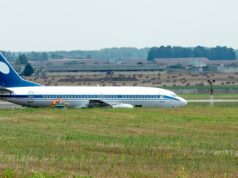Last month we talked about safety incident reports required by regulatory agencies as well as air transport companies for pilots and other aviation professionals to submit when encountering or witnessing certain events or conditions that impact or have the potential to erode safety. This month, we are discussing voluntary safety reporting programs. In the airlines, the most widely recognized “optional” safety reporting program is ASAP: the Aviation Safety Action Program, outlined in FAA AC120-66. Before we get into ASAP and other voluntary safety programs though, let us first consider the roots of these programs.

As far back as World War II, the aviation industry has recognized the importance of collecting and analyzing voluntary safety reports to prevent future incidents and accidents – information about the operation that is only available or knowable to regulators and companies if employees and frontline personnel are willing to report issues and self-report errors. Because if this, individuals are not honestly relaying the threats, errors, and concerns they see in the operation, so there is little opportunity for relatively distant managers and bureaucrats to instill change and build safer systems. So, how do you encourage individuals to report?
The realization emerged that the more discipline is threatened for wrongdoing, the less likely individuals are to report or admit to anything, and therefore the less likely a complete and truthful accounting of events affecting safety is available. Thus, the FAA asked NASA, an independent organization without regulatory or enforcement authority, to design an incident reporting program and to receive and analyze general aviation incident reports. NASA accepted and the Aviation Safety Reporting System (ASRS) began on April 15, 1976. The mutual benefit for a pilot submitting an ASRS report is the creation of a data point about operations and events in the National Airspace System (NAS); and in turn the pilot (having accidentally violated a rule or regulation), receives exemption (usually) from FAA enforcement action. To date, the ASRS program has been a huge success, receiving over 1.5 million reports, enhancing safety in the NAS through this trusted, voluntary safety reporting process.
The key to securing highly valuable, firsthand data is building trust between the organization and pilots, and by providing a means of submitting information without fear of retribution. Based on this concept, the airline version of ASRS was born in 2002, and ASAP became available for pilots (an eventually other air-transport professionals including dispatchers, flight attendants, mechanics, and controllers) to report safety concerns and errors. The collected data enhances safety through trend analysis – the ability to “see” groupings of similar events, and then develop solutions to mitigate their occurrence, with the ultimate goal of preventing incidents and accidents. ASAP data has led to widespread improvements in everything from airport surface markings and lighting to modifying arrival and departure procedures.
While there is no requirement for an employee to file an ASAP report (although participation is highly encouraged) it does provide certain protections from certificate action and job discipline for participants – as long as safety was not compromised as a result of criminal activity, drug or alcohol use, or the intentional disregard for safety and standard operating procedures. In other words, it was an honest mistake.
Our voluntary safety reporting program discussion continues next month with Flight Operations Quality Assurance (FOQA), as the next level in data mining for safety.




















































